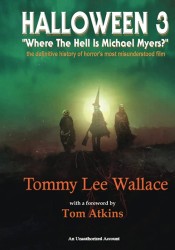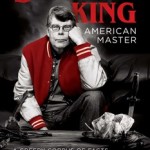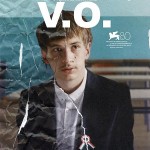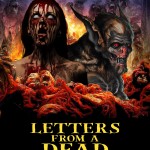HALLOWEEN 3: “Where The Hell Is Michael Myers?” – Tommy Lee Wallace (review and interview)
There are so many film franchises it’s hard to keep up, and they generally are from the horror genre. From SAW, SCREAM, TEXAS CHAINSAW MASSACRE, JAWS, A NIGHTMARE ON ELM ST., and FRIDAY THE 13th (which are all greats) there seems to be one that really resonates with fans…HALLOWEEN. This particular franchise not only kicked off an entire subgenre of “slasher films” within the horror genre, but also had its own long line of sequels that finally came to an end in October, 2022. It seems that through the decades HALLOWEEN films have sustained the test of time.
Throughout this franchise there have always been so many questions surrounding the main character, MIchael Myers. In the newly released book HALLOWEEN 3: “Where The Hell Is Michael Myers?” written by director/screenwriter Tommy Lee Wallace, we just may find out the answers.
Director John Carpenter, has been giving moviegoers nightmares for decades in the form of ‘the shape’, better known as “Michael Myers”. Michael came out only on Halloween night to bring terror to the suburban town of Haddonfield, hunting down babysitters and anyone who got in his way. The original 1978 horror classic spawned decades of sequels, reboots, re-reboots, and a tidal wave of collectible merchandise. However, in the middle of all that, there was one sequel that didn’t have Michael Myers in it at all. In fact, it had not much at all but the name of the film in common, and that it was part three.
HALLOWEEN 3: SEASON OF THE WITCH was released October of 1982, and celebrated its 40th Anniversary in 2022. For decades, fans grew to love the non-Michael Myers sequel, but still they had many questions. HALLOWEEN 3: “Where The Hell Is Michael Myers?” is just the book to read, and who better than the director to answer these questions than…Tommy Lee Wallace?
I remember seeing HALLOWEEN 3 in October, 1982. I was only 11 years old, living in North Carolina, and I went to see the new sequel with my cousin. I was excited just like everyone else to see the latest film in the franchise, and to see Michael do what he does best…scare the heck out of us! About 30 minutes into the film, I asked my cousin, ‘Where’s Michael?’ She didn’t know, and neither did the rest of the audience. Once the film was over, I found myself liking the sequel more than I expected. Although it was different, and not actually seeing Michael Myers, I enjoyed it for what it was, and what it was about.
I found the storyline interesting – a mad mask maker, Conal Cochran conjuring up some celtic magic, playing devious jokes on the kids by having them wear special Halloween masks, only to try to kill all the children in the world on Halloween night. Then to be foiled by a doctor, and the daughter of a murder victim of Cochran’s, who finds out about his deadly plan. Yeah, that was right up my alley, and I liked that.
HALLOWEEN and HALLOWEEN 2 were so successful at the box office that Universal Studios, and director John Carpenter thought it would be a good idea to have a new movie out every October (surrounding the tradition of Halloween) with a different storyline each year. HALLOWEEN 3: SEASON OF THE WITCH was the first (and only) story released that left out its main protagonist (Michael Myers), however, its storyline was such that fans began to warm up to the idea of this film as a “stand alone”, and it has generated its own cult following. It has sustained the test of time as well.
Tommy Lee Wallace did a solid job of directing, had a fine cast, and a good storyline. Critics weren’t very kind about the film upon box office release, (what do they know anyways?) and die hard fans were even tougher critics. However, there were so many unanswered questions, loose ends, and just plain curiosity about HALLOWEEN 3, that fans embraced the film. Now the answers to those questions are at your fingertips, and the buzz surrounding this third Halloween film has sparked new interest through Tommy Lee Wallace’s insightful new book.
HALLOWEEN 3: “Where The Hell Is Michael Myers?” is about the making of Halloween 3, as well as a look into Tommy Lee Wallace’s life. It takes us on a journey of growing up in Kentucky, attending college with his life-long friend John Carpenter (who Tommy would work with many times on many films including, HALLOWEEN, HALLOWEEN 2, THE FOG, DARK STAR, ASSAULT ON PRECINCT 13, and others), and also about Tommy’s career as a director in other films such as, AMITYVILLE 2, FRIGHT NIGHT 2, and more. The book is, of course, about the making of HALLOWEEN 3. It’s packed full with details of how the film was made from start to finish, the struggles from script to screen, casting, auditions, locations, premieres, and the reactions from the fans of the franchise.
Tommy Lee Wallace shares plenty of behind-the-scenes stories on and off the set, what the original plot of the film was (and how it changed,) and plot loopholes that fans have always wanted answers to. After 40 years of waiting, fans will now get all these answers. The book is filled with great surprises such as photos, behind-the-scenes photos, HALLOWEEN 3 merchandise info., fan art, and a peek at the original script and storyboards from the film from 1982, which have never before been seen until now.
As a die hard fan of the franchise, as well as having the “guilty pleasure” of this 3rd sequel film, I found the book entertaining, intriguing, informative, and a fun-packed read. This makes for a very interesting “making of” a film book that is sure to please anyone who ever wanted to know more about HALLOWEEN 3. It far surpasses the DVD’s “making of” clip. It is a must-have for your book collection, and for all horror fans.
I recently had the pleasure of interviewing Director and newly published Author, Tommy Lee Wallace, and enjoyed it tremendously. I hope you will enjoy reading it as well.
Anthony Northrup – You grew up in Bowling Green, Kentucky. What was that like, and did it have any bearing on your choice of career?
Tommy Lee Wallace – Bowling Green was, back then, a small, southern college town, a great place to grow up. It’s bigger now, naturally; that small college has become Western Kentucky University. John Carpenter is also a native of B.G. That hilltop campus was a great playground for each of us as kids, long before we got acquainted and eventually became friends. Safe to say, Bowling Green was not an obvious on-ramp to show business, though now, looking back, I can see that there were glimmers of it radiating northward from the country music industry in Nashville, Tennessee, only an hour down the road. In fact, John’s father, a faculty member at Western, often added his viola to recording sessions down there. My choice of career didn’t actually come until the waning days of my tenure as an Art & Design major at Ohio University; I was either headed for New York to pursue a career in graphic design, or Los Angeles, to enter film school as John had done a couple years before. My art education included a bit of animation and fundamentals of filmmaking, so the decision to head west had a certain logic. John and I had continued to correspond, and the picture he painted of the west coast scene, and his own laser-focus on a future in the movies, were powerful incentives. In the end, I don’t think Bowling Green itself had all that much to do with my decision.
AN – The majority of your work is in horror films and television. Were there any particular inspirations that led you to choose this genre?
TLW – The line of least resistance, I think. Although I grew up enjoying certain favorite horror and sci-fi movies like most kids of that era, I wasn’t the aficionado John was in these genres. When he left film school and asked me for my help on his early movies, I would’ve gladly jumped in, regardless of subject matter — could’ve been musicals, comedies — I had simply fallen in love with the medium. DARK STAR was a sci fi comedy, ASSAULT ON PRECINCT 13 neo Western action thriller, HALLOWEEN psycho-killer horror. The phenomenon of Halloween’s success, as well as that of THE FOG benefited everyone involved, but Hollywood famously pigeonholes its talent, so the benefits, that is, the employment opportunities that sprang from those movies were predominantly in the area of horror, most notably HALLOWEEN 3. So, to finally answer your question, it wasn’t really “inspiration” that led me to the horror, nor was it exactly a “choice”, strictly speaking. It was simply certain doors opening, and me walking through them.
AN – In the early years John Carpenter, Debra Hill, and you were a tight trio. You went to school with John, and worked together with both he and Debra., What did you learn most from them?
TLW – You’re now introducing the subject matter which I cover extensively in my book Halloween 3: “Where the Hell is Michael Myers?” (Bear Manor Publishing, via Amazon) if you’ll permit the plug. A lot of the book is devoted to answering your question. I’ll try to give you the short version: From boyhood, John was a creative dynamo, writing songs, making 8mm movies, drawing superhero comics; he was the first person to open my eyes to the possibilities of a creative life as something more than a hobby. Using John’s example, I went from being a dabbler with a bit of talent in music and art, to being a full-fledged artist, or at least aspiring to that. Over the years, John has taught me many more things, not the least of which were certain finer points of screenplay writing, certain ins and outs of film editing, and, of course, mostly by example, the complex art of film directing. Big things. Debra and I worked closely, and became friends, beginning with ASSAULT, and on through HALLOWEEN, THE FOG and H3. Besides being good company and a good friend, Debra was an absolute natural as a producer. I learned a lot watching the way she wrangled a crew of people, with her winning combination of laid-back good humor and a gung-ho get-it-done attitude, attributes she and John shared. I also learned from Debra one of the most valuable lessons any filmmaker can take to heart: When things go wrong, it’s best to skip lightly past blame and recrimination, simply solve the problem and move on.
AN – During your career, you’ve tackled some pretty big franchises. However, one of the biggest projects you took on was the Stephen King epic novel, IT. How did this project come about, and how hard was it to bring a 1000+ page classic horror novel to the television screen over a two night, 2 hour episode each of those nights?
TLW – IT came to me in the conventional way: Certain interested parties contacted my agent about the directing gig, I went to a meeting, must’ve said the right things, and got hired right away. By the time I came on board, the project had been around for a while, a lot of the budget had been spent coming up with a viable script, and a more ambitious mini-series of several nights had been gradually whittled down to two. I don’t know for certain, but I suspect that what may have gotten me the gig was my reputation for wringing decent results out of shoestring budgets and impossible schedules. The biggest challenges were, as you suggest, in the script. IT is a marvelous novel. It takes its time, and goes many, many places as it tells its tale of a group of children who bond with each other and bolster themselves against unspeakable evil, both as kids, and then again as adults. Larry Cohen’s script for Night 1 is a masterpiece, the only time I’ve ever seen TV’s seven-act movie structure used effectively as a dramatic tool. Seven-act TV movie structure is purely in service of commerce, not art or drama; it’s a way of cramming as many commercials into the program as is humanly possible, without completely losing the thread of the story. Fortunately for us, and thanks to Larry’s skill, the seven acts proved ideal for introducing the seven key characters, one by one, as their adult lives are interrupted by terrifying news calling them back to their collective childhoods: IT has returned. That was Night 1. As good as that script was, the Night 2 script left a lot to be desired. Suffice it to say that after quite a bit of rewriting, I wound up telling the story as best as I could, given the time limitations, both in pre-production, and in the predetermined length of the show. In the end, one could say the IT miniseries was a sort of Reader’s Digest condensed version of the novel. As to the epic, universal conflict featured in the climax of the book, the cosmic turtle and all that — well, there are just some things a novel can do that a movie cannot. (And vice-versa, of course.)
AN – Let’s talk about your latest project, your book HALLOWEEN 3: “Where The Hell Is Michael Myers?” Beside it being the celebration of HALLOWEEN 3′s 40th Anniversary in 2022, was there any other reason you decided now was the right time to share the making of this film? Was there a reason you chose to do it in book form rather than a film documentary?
TLW – It never occurred to me to do a documentary about it. Such a thing might have been effective, or at least possible, had there been a behind-the-scenes video crew, back in 1982 when we were filming. Without that kind of footage I can’t imagine how a doc could’ve worked. Ken Burns does it on a regular basis with a crack team of pros, an endless array of stills and clips and vintage music, interviews with famous people, etc. For my little movie? I just don’t see it. What really happened was that an old friend, Bruce Harrison Smith, an up-and-coming film director in his own right, had just finished putting out a book about his love of movies, when a chance conversation with publisher Ben Ohmart revealed that HALLOWEEN 3 was one of Ben’s favorite movies. Bruce immediately called me, and you can fill in the rest.
AN – How long did it take to complete the book, and what do you hope the fans will take away most from it?
TLW – Almost a year of writing, off and on. I started making notes in earnest in November ’21, and turned in the manuscript, I believe, late September ’22. I hope the takeaway is about my own re-discovery of the film’s value, thanks to a cadre of faithful fans. The fans of H3 are incredible. Their enthusiasm for this movie has given me the encouragement I needed to tell the whole story as best I can. Everyone likes happy endings, and H3 has a happy ending, after what seemed like a rather dismal beginning — although the truth of it is that H3′s release wasn’t the failure it was made out to be. You can check my book for box-office figures. It’s simply that the howl of disappointment from certain HALLOWEEN fans was so loud and long that it took time for other voices, of those who liked the movie, to be heard.
AN – While filming H3, were there any challenges during the process? If so, what were they?
TLW – The challenges were, perhaps surprisingly, very few. On the one hand, a vivid, scary, fun and entertaining commercially successful horror movie on 2.5 million dollars, on a schedule of roughly nine months from script to screen, is, by definition, a huge challenge in and of itself. On the other hand, I was handed a fantastic crew of mostly friends I already had a positive history with, a cadre of producing partners who were sublimely supportive (and who kept the suits totally at bay); I had a perfect cast, all of whom performed brilliantly; in John I even had the composer from the original HALLOWEEN– not to mention the fact that I was ready, quite ready, to meet the challenge of the moment. I had, by that point, done most of the jobs on a movie set as well as those in the cutting room, I had directed a challenging slate of student films, I knew, in other words, what was expected of me, and, thanks in no small part to my training at USC Cinema, and my involvement in other Carpenter movies — I was more than ready. Getting the script screen-ready was the biggest challenge. Nigel Kneale created a great, twisted vision, but it needed serious help (from John and me) to have it ready for Day 1 of shooting.
AN – Your three lead actors, Tom Atkins, Stacey Nelkin, and Dan O’Herlihy did a wonderful job. What were their auditions like, and what did they bring to the table that won them their roles?
TLW – Thank you. We chose Tom and Dan without auditions, based on their previous work. Dan was a long- established, if minor, movie star, and Tom was a known quantity to me because we worked together on THE FOG; that, and we were also part of the same social circle, via our mutual friend Adrienne Barbeau, who had been John’s wife during that time. As to the part of Conal Cochran, I first tried to get Fred MacMurray in the role, without success. People might remember MacMurray’s avuncular presence in certain Disney films, and on the “My Three Sons” TV series. However, few will recall how utterly sinister he was opposite Barbara Stanwyck in Billy Wilder’s Double Indemnity. His split-personality potential intrigued me, and I know he would’ve been chilling in the role. Then Debra suggested Dan, and it was an “aha” moment. He had that same disarming, fatherly charm, but oh, something quite evil in those eyes as well. What a great actor. He knocked it out of the park, of course, one of the film’s great gifts, and perhaps its secret weapon. We had a long list of the usual suspects for the role of Dr. Challis, but when Tom’s name came up (Debra’s idea again) it made perfect sense, especially because we decided to cast an ingenue opposite him, for a kind of May/December vibe. I thought Tom was splendid from start to finish, and his and Stacy’s chemistry helps glue the movie together. Stacy came to us via the traditional audition process. We called her back, along with two other actresses, and Tom was good enough to come over and read with all three. Stacy’s chameleonic skills, as well as that chemistry with Tom, became another potent feature of the picture.
AN – In the big finale, the Silver Shamrock factory goes up in flames, did any of these original masks make it home with you?
TLW – Yes, one complete set. I wonder: If I take them to “Antiques Roadshow”, what kind of appraised value do you suppose they have, 40 years after?
AN – In 1982 when HALLOWEEN 3 was released there were some mixed emotions from the fans. The absence of Michael Myers’ presence seemed confusing to some. Now that it’s 40 years later, how has the fan’s reaction been, and how does it make you feel knowing there is still such a huge fanbase for this sequel?
TLW – “Mixed emotions” is a very kind way of characterizing that initial reaction from so many HALLOWEEN fans, hence the subtitle of my book. It really seemed like a hate-a-thon there for several years after release. The love feast that has followed, and which continues to build, is, as you can imagine, very, very gratifying. Redemption is sweet. I’m astonished at the multi generational explosion of interest. People screen it annually as part of their HALLOWEEN celebrations, and, if you look around, the proliferation of H3 merch is mind-boggling. I mean, posters, T-shirts, hats, sure, but lunch boxes, wrapping paper, earrings, ouija boards, are you kidding me?
AN – There are many unanswered questions about H3…such as did Cochran survive as in the novelization? How did Ellie go from human to robot in record time, and did Challis get the third channel to turn off in time? What I’d really like to know is if Jamie Lee Curtis did the voice overs for the 6 p.m. curfew in the town of Santa Mira? (Asking, as if I will get the answers here, hehe).
TLW – All these questions are addressed in the book. Would you have me be my own spoiler?
AN – You’ve worn many hats throughout your career (writer/screenwriter, producer, director/art director, actor). Which did you enjoy more than the others, and was there any one in particular that you found more challenging over the others?
TLW – On occasion, writing can be quite effortless, when words and ideas just seem to leap onto the page. That certainly was the case when I rewrote H3 — but then, under the gun, shooting day looming, sometimes a deadline can be a great motivator. More often than not, though, I’ve found writing to be the most challenging aspect of filmmaking. That blank page staring back at you, it can be tough, and it’s often a very lonely process. To single out one challenging project from the others is — well, a challenge. I’ve done a lot of television, and a persistent challenge throughout my career was when I would encounter TV producers unaccustomed to working with Directors like me, who come from low-budget features where the Director is truly in charge, and good results depend heavily on trust, without a lot of doubt and interference. VAMPIRES: LOS MUERTOS was a particular challenge, because the studio head didn’t understand how effective humor could be in a horror movie. Go back and check HALLOWEEN, one of the scariest movies ever made. It’s laced with humor, which helps make the scares that much more effective. That said, directing was, and still is, the most fun for me. If you know what you want, and if you have gobs of talented people around you, eager to contribute, what could be finer? It’s also natural, I suppose, to enjoy playing God sometimes. It’s crucial to have someone at home to remind you to take out the garbage — that helps put your feet back on the ground. 1990 was a big year for me. I directed IT and AND THE SEA WILL TELL (another mini-series, this one a true-crime drama by Vincent Bugliosi.) The two shows competed for the highest ratings in their category that year. I think I hit my stride then; both shows were extremely well-produced, which allowed me to stretch out and do good work, maybe my best, from the director’s chair. I certainly had a lot of fun.
AN – Looking back at 40 years of HALLOWEEN 3, is there a memory that stands out most for you?
TLW – Marvelous cast, brilliant crew, superb producerial support, and, in the end, I was pretty much given the final cut. Looking back, that situation is unheard of on a first-time feature. I’m glad I was ready for it, and up to the task. It gives me a great burst of pride, doubly so because the praise for it was a long time coming. So my best memory is that overall burst of pride, long-delayed, at a job well done, and appreciated by so many.
AN – Lastly, what’s next on the agenda for Tommy Lee Wallace?
TLW – SCARYLAND – feature film, co-written with my son. One Christmas Eve – a novel, my first. MIDNIGHT MOTEL- TV series about the apocalypse in LA. THE GATE – supernatural horror on an HBCU campus. DON’T F**K WITH THE JONESES – high action feature; Transplanted hillbillies vs. urban mobsters. Thanks Anthony, you ask good questions.
I want to thank Director, and newly published Author Tommy Lee Wallace for taking the time to share with us today, and we wish him success in all his future projects.







 THE SISTERS OF THE MOON Trilogy – Samantha Chambers
THE SISTERS OF THE MOON Trilogy – Samantha Chambers (Italiano) UNA SPIEGAZIONE PER TUTTO – Gábor Reisz
(Italiano) UNA SPIEGAZIONE PER TUTTO – Gábor Reisz (Italiano) CIVIL WAR – Alex Garland
(Italiano) CIVIL WAR – Alex Garland STEPHEN KING NOT JUST HORROR – Hans-Ake Lilja
STEPHEN KING NOT JUST HORROR – Hans-Ake Lilja SACKHEAD:The Definitive Retrospective on FRIDAY THE 13th PART 2 – Ron Henning
SACKHEAD:The Definitive Retrospective on FRIDAY THE 13th PART 2 – Ron Henning NEON NIGHTMARES: L.A. Thrillers Of The 1980′s – Brad Sykes
NEON NIGHTMARES: L.A. Thrillers Of The 1980′s – Brad Sykes THE AFTERLIFE BOOK: Heaven, Hell, And Life After Death – Marie D. Jones & Larry Flaxman
THE AFTERLIFE BOOK: Heaven, Hell, And Life After Death – Marie D. Jones & Larry Flaxman POPULATION PURGE – Brian Johnson
POPULATION PURGE – Brian Johnson LETTERS FROM A DEAD WORLD – David Tocher (review & interview)
LETTERS FROM A DEAD WORLD – David Tocher (review & interview)